Bouldering is an exhilarating activity. Here we explain everything you need to practise it confidently and safely.

Boulder in Targasone. Photo: Pep Soldevila/CuadernosTecnicosBarrabes
What is boulder?
Boulders are basically big rocks.
And that's what bouldering is all about: climbing boulders large enough to be climbed, and small enough that no belay rope is needed to climb them.
How high?
That depends. You can go as far as highballs, where, due to their height, a fall from the highest point can lead to serious injuries. A bouldering problem is usually considered to be a highball if it exceeds 4 or 4.5 metres in height.
This type of climbing is obviously limited to the most experienced climbers. Normally, when facing bouldering problems, we are talking about rocks that allow a fall without consequences... if we are aware of what we are doing, and of the appropriate safety rules that we will see later.
Bouldering - climbing training or an end in itself?
Sometimes, especially for beginners, bouldering can be thought of as an activity that is basically for training, or to kill the bug when there is no possibility of climbing higher altitudes.
Nothing could be further from the truth.
The virtues of bouldering are many, which is why there are real specialists who passionately devote practically all their time and effort to solving boulders.
And make no mistake: compared to the greater safety of sport climbing, bouldering has something reminiscent of classic climbing and mountaineering: precariousness, natural environments, a management and acceptance of risk that involves learning in steps and with confidence and safety, as opposed to the continuous, consequence-free falls of sport climbing.

A bouldering movement, concentrated difficulty. Photo: Pep Soldevila/CuadernoTecnicosBarrabes
Also, as they involve few moves, bouldering problems are very concentrated, and demand the most we can give in just a few moves. Difficulty in its purest form, movements that we could not do on a wall with continuity.
Safety and material
As this is not intended to be an article on bouldering technique, we will not go into detail. But it must be said that falling can be and must be learnt. And that, before taking risks, we must train ourselves and little by little gain experience and security in our climbs.
Bouldering is not risk-free, and falls in bad positions do occur, mainly due to the forced positions which the difficulty demands.
These falls are saved by some fundamental people who help us - and whom we help - to fall safely: spotters.

Climber and spotter. Photo: Pep Soldevila/CuadernosTecnicosBarrabes
What is the role of spotters?
They stand underneath us, and control our fall. Their mission is not to catch us, but to prevent us from falling out of the mat due to the inertia of the fall.
Yes, mat or crash pad. Perhaps of all the equipment that exists for bouldering, the most important is the crash pad. We would say the spotters, but it's not material, it's a partner. Just as the climbing partner is the most important thing in climbing and mountaineering.

Crash pads to cushion a fall. Photo: Pep Soldevila/CuadernosTecnicosBarrabes
Spotting is an art that can also be learned: not only is the safety of the climber at stake, but also that of the person spotting. There are rules to learn to avoid hurting your hands and body.
The essential equipment for bouldering, if we compare it with climbing, is characterised by what is not necessary. Here we don't need harnesses, ropes, belay devices, quickdraws, friends, or nuts...
All of these items, which slows down our fall, are superfluous in a type of climbing that is characterised by the fact that we fall to the ground. That's why the most important thing is cushioning, by means of crash pads and buddies, and learning how to fall.
Essential material for bouldering
1. Crash Pads or Mats
They come in different sizes and are usually made of double density foam, with a very resistant non-slip lining to better break our fall.
Some have more cushioning, some less; the former absorb higher falls, but weigh more; the latter are a good compromise if we are not going to get too high. The quality is noticeable: the best ones will hold their cushioning over time, without softening.
There is a problem: the boulders are scattered in the mountains or in nature. And one way or another, the mats have to be transported to the location. That's why the mats are foldable and have shoulder straps that allow you to carry them on your back like a backpack.

Crash Pad Camp Minidó, with shoulder straps
Of course, the bigger the mat, the safer it is, and the harder it is to fall off the mat. But we have to find the right balance between our body size and the weight and volume of the mat when it is transported. And you also have to be aware that the bigger it is, the more expensive it will be.
Here we have an advantage: if we go along with the spotters, who also climb and spot, each person will carry their own crash pad, and we can make a mosaic of mats to cover the amount of ground needed to cover a possible fall. In this case we can carry a smaller mat.
However, if you are climbing alone, or with hardly anyone else spotting, you will need to choose a large mat that covers the necessary space without supplementing it with other mats.
A carrying cover is recommended. This will increase the lifetime of the crash pad.
2. Climbing shoes
Since the difficulty is concentrated in bouldering, the climbing shoes used for bouldering, especially when you have already reached a certain level, are very technical: rather asymmetrical, with soft soles, not very thick, and possibly with a pronounced downward curve.

SCARPA Arpia
We won't discuss this at length: we recommend you read the articles How to choose climbing shoesy Choose your climbing shoes by grade and style: comparison between iconic models where you will find all the information about this and much more.
One thing: since bouldering climbing shoes will be the most technical, which are usually the most uncomfortable, and since we will have to put them on and take them off every time we want to make an attempt, it is recommended to choose velcro closures or slippers. This is much more comfortable than lace-up shoes.
3. Brush
Yes, a brush and they are indispensable. They are special for bouldering, and are used to clean the holds of dirt such as magnesium, rubber, sweat, grease, allowing an optimal grip on each hold.

Bouldering brush by Metolius
Actually, they can be used in climbing as well. In fact, they should be. The thing is it is not always possible to do so, and when it is possible, it is complicated, whereas, in bouldering, holds can be easily cleaned in most cases. Moreover, because of their few moves, the repetitions are worked all the time on the same holds, and they suffer much more.
It's not just a matter of brushing them off to make our climbing easier. You have to think of others: not only will they find the problem ready to climb, but the absence of marks will allow them to try it without clues.
And something very important: chalk stains are an environmental intrusion. It is necessary to leave the mountain as we found it... and not to abuse chalk.
4. Clothes for bouldering
It has to be very comfortable and very durable. On the one hand it has to protect us from rubbing against the rock, and on the other hand it has to allow us to move freely.
Interestingly, cotton works very well here. You'll even find stretch jeans that are specially designed to allow for all movements and, of course, cotton T-shirts and sweatshirts. Which, by the way, double as lifestyle garments.

Ternua Approach Pant
5. Chalk bags and chalk
As with climbing, especially when it comes to high grade, chalk is used to prevent sweating and improve grip.
But unlike climbing, as there are only a few moves, you don't normally need to carry a chalk bag around your waist, because you won't need to replenish it during the climb.
Therefore, bouldering chalk bags are usually quite large and flat-bottomed, because they are often left on the ground at the foot of the problem.

Mammut Boulder Cube
As they are large, they are very comfortable, because, like gymnasts, we can insert both hands at the same time.
Thanks to their size, they often have pockets to carry brushes, etc.
6. Other bouldering materials. Hand care
As we have seen, and unlike climbing, the equipment used for bouldering is minimal and basic. This also contributes to the sense of freedom that bouldering brings.
Nothing more than the above is necessary. However, it is advisable to take care of our hands, both with tapes and with healing creams.








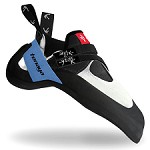

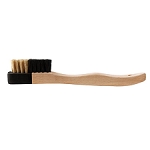

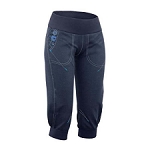
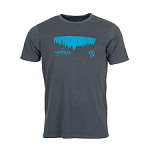

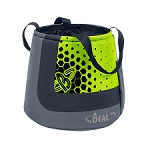
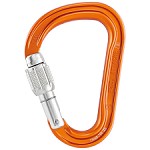




Leave a comment
Be the first to comment on this article.